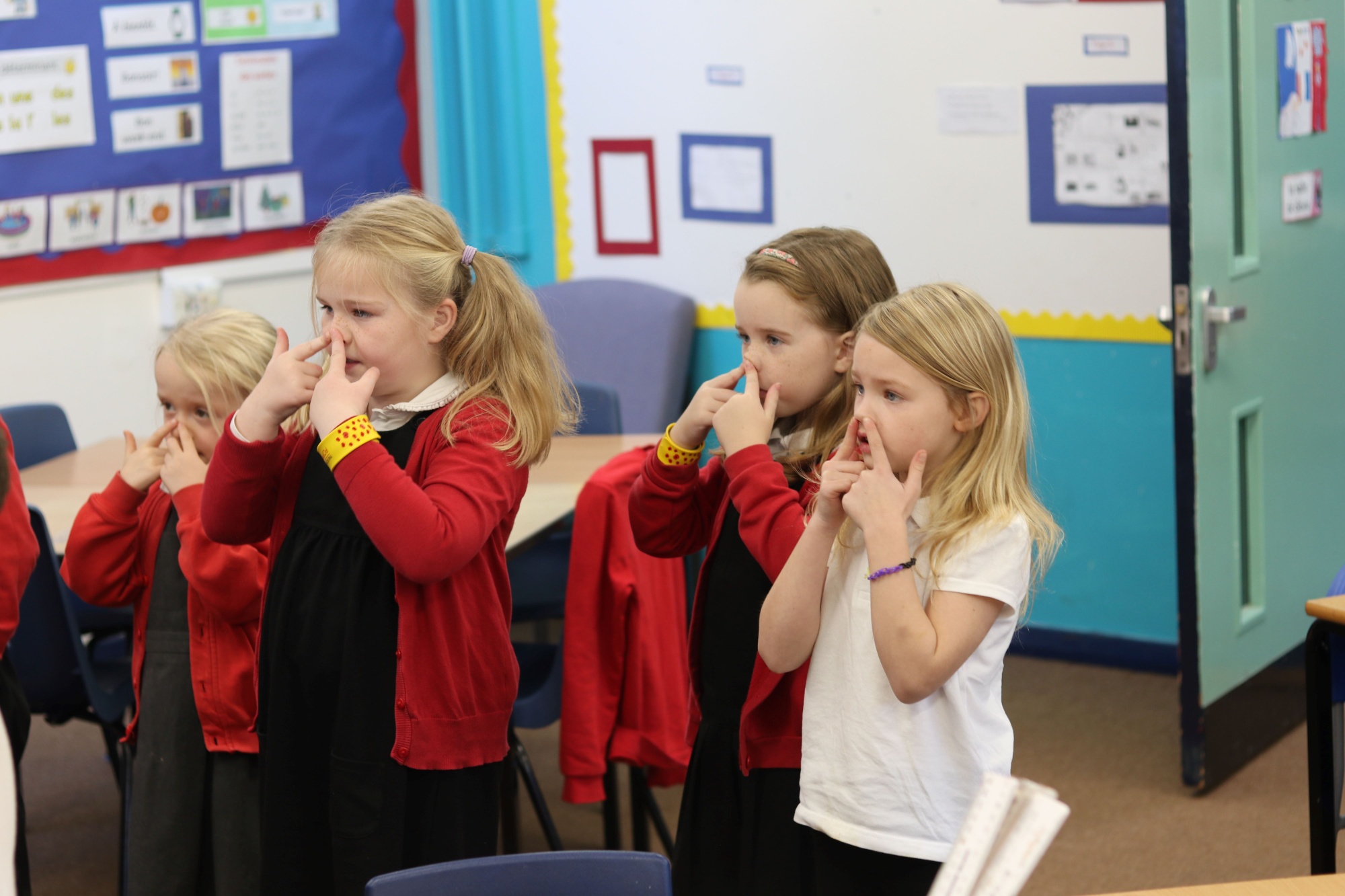Maths
The school's 'Champions' for maths are Mrs Kimberley Ritchie and Mr Mike Pennington.
Please find whole school Maths plan here!
Frequency of sessions: From Years 1 - 6, maths is taught for one hour every day. In Early Years Foundation Stage, mathematics is taught through the continuous provision and short focussed inputs.
Deanshanger Primary School uses the White Rose scheme of learning broken down into each area of maths and into further small steps. This is designed to support a mastery approach to teaching and learning as well as to support the aims and objectives of the National Curriculum. Each step is planned to develop children’s fluency, problem solving and reasoning skills. All mathematics lessons are differentiated to meet the needs of every child using resources from White Rose and Classroom Secrets.
Mathematics is assessed using a range of formative and summarise assessments. There are three formal assessment points throughout the year. National tests are carried out at the of the EYFS, and at the end of Key Stages one and two. Although the assessment of children's multiplication in Year 4 was originally planned to start from June 2020, due to the pandemic, this has been delayed.
In Year 1 (summer term only), 3, 4 and 5, NFER maths tests inform progress and identify next steps and the gaps in learning.
Our Calculations Policy outlines the methods used in each year group to meet the expectations.
Homework will be set in this area of the curriculum to extend and apply the knowledge taught in lessons. Children also have access to Times Tables RockStars or Numbots (Reception to Year 2), an app that supports the recall of multiplication facts. In Years 3 to 6 children are also set weekly tasks on MyMaths.
Our Maths/English powerpoint presentation for parents can be found here.
The following sites will also support your child's learning in maths :
Mathisfun.com
Topmarks.com
theschoolrun.com
Oxford Owl Maths
BBC Bitesize
National Numeracy
Maths Zone
For a comprehensive guide to supporting maths at home,
Frequently Asked Questions
1. What decisions have been made about the maths curriculum?
We chose to use White Rose as a basis for our maths planning to ensure curriculum coverage and progression. Alongside this we have made it clear to staff that they can use White Rose, Classroom Secrets and Twinkl to resource lesson inputs and tasks. The White Rose curriculum is right for our children as it works in line with the National Curriculum expectations, so we know they are given the breadth of maths they are entitled to and it can be differentiated to each child’s ability and understanding. The decision to use White Rose was made before we became subject champions but is one, we believe is correct for the children in our school.
2. How has the subject curriculum been adapted to meet our needs?
The curriculum we have now enables our pupils to be given appropriately challenging tasks and for the school to be consistent in doing this across the year groups. This addresses the Ofsted point: ‘Not all teachers are routinely showing pupils how to tackle appropriately challenging tasks, particularly in mathematics and reading in key stage 2.’ White Rose will raise the standard of maths teaching and learning which in turn will have a positive effect on the progress by the end of Key Stage 2 which was identified as persistently below the national average in the 2019 Ofsted report. In the report it stated that the use of ongoing assessment was highly effective to plan targeted and structured opportunities to develop skills particularly number, this has continued to be a strength across the school. The White Rose based curriculum will prepare the children for their learning in secondary school as it gives them the opportunities to learn all the areas of the maths curriculum, eliminating any social disadvantage by consistently addressing gaps in their knowledge and skills.
3. How do you know that the maths curriculum is working?
We ensure that pupils make progress through each year group, acquiring and applying key knowledge, so that they at least meet the agreed age expectations in a subject, this is done through 3 assessment weeks over the year and teacher ongoing class data analysis sheets which help identify successes and gaps. This then feeds into each year group’s provision maps and short-term maths interventions. We use the gap analysis to feed into our weekly plans. The White Rose curriculum is directly in line with the calculation policy for the school. Assessment in Foundation and Year 1 is evident on Tapestry, across the other year groups there is use of White Rose end of block assessments, previous SATs papers and NFER assessments.
4. What has been the impact of lockdown etc on the subject and what positive examples can you share about the subject and its remote delivery?
During lockdowns, whether it was learning packs in 2020 or live zooms in 2021 the use of White Rose based resources was easy to access and use by teachers and parents. The children were focussed and were able to concentrate on the maths fully, The children also had the opportunities to apply their maths learning practically at home and parents enjoyed learning alongside their children. Teachers were able to provide interactive lessons using whiteboards or paper and pupils were able to complete tasks in a live lesson or as a follow-up in their own time.
5 - What are the strengths of the maths curriculum?
We have a robust and comprehensive curriculum which gives full coverage for each year group. All teachers have had training in the use of White Rose and resources. There is now clear and consistent planning. The star system is consistently used from Years 2-6 and Tapestry in Rec/Year 1 this demonstrates strong learning and progress across the school.
6. How do you lead professional development, provide guidance and support colleagues in maths?
Training provided in September on using White Rose and supplementing resources approved as mentioned before. Rolling multiplication introduced. Hashtags introduced. Maths expectations on the working walls with stem sentences. All previous planning provided for new and existing members of staff. Resources all organised within maths cupboard for access to all.
What training has been put in place and why? Who has been included into this? What is the impact on this (for all groups of children). How are new staff supported in your subject?
7. How is maths resourced?
Subscriptions paid yearly to classrooms secrets, white rose and twinkl. Manipulatives are resourced as requested and shared as good practice for others to use as needed.
How do you ensure that appropriate resources are in place to deliver a rich and challenging curriculum? Have new resources have been bought to improve teaching and learning in your subject?
8. What would an external visitor see if they focused on maths?
Hopefully all of the above, but within a lesson they will see consistency and appropriately challenging lessons that advance children’s knowledge daily as well as over a longer period of time.
Differentiation is clearly evident is every single lesson and progress can be tracked easily. They will also see children who have gaps in their learning and how these are addressed within the lesson or supported externally from that lesson so all are moving as one across the year group curriculum coverage.
9. How does your subject support children with SEND, PP and the most able?
Intervention and additional support is given in maths for SEND/PP children where needed. The White Rose scheme of work allows the teachers to access resources from previous years or terms to support children with maths concepts they are yet to grasp. The schemes and resources also allow the teacher to plan for the gifted children working at a greater depth.




